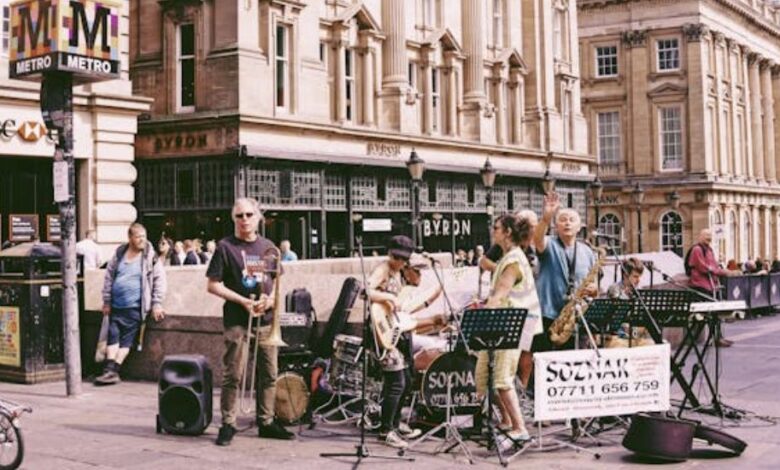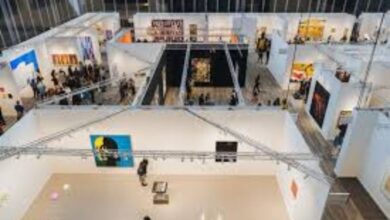The Significance of the Center for Visual and Performing Arts

At the heart of cultural and creative expression lies the “center for visual and performing arts.” These centers play a critical role in shaping and sustaining the artistic landscape of any community. Whether one seeks to admire visual masterpieces, enjoy compelling performances, or delve into artistic expression themselves, these centers stand as hubs of inspiration and creativity. At USA Magazines, we believe that the promotion and preservation of the arts through spaces like these fosters a deeper connection to culture, humanity, and the world at large.
This article aims to explore the essence of a “center for visual and performing arts,” shedding light on its various components, contributions to society, and the irreplaceable role it plays in both individual and community development.
What is a Center for Visual and Performing Arts?
A center for visual and performing arts is a dedicated venue that houses a wide array of artistic activities, typically encompassing both visual and performing art forms. These centers act as a bridge between artists and the public, offering spaces for exhibitions, performances, and educational programs. In a single location, one can experience everything from art galleries, featuring works like paintings and sculptures, to live performances, including dance, theater, and musical events.
The center is designed to serve as a multi-functional facility, catering to artists, art lovers, students, and even casual visitors who may be exploring art for the first time. Often, these centers will have both indoor and outdoor spaces to accommodate various forms of art and performances, allowing for versatility and inclusivity in the types of experiences offered.
The Role of Visual Arts at the Center
The “visual arts” aspect of a center for visual and performing arts refers to the display and appreciation of artwork that can be seen—typically in the form of painting, sculpture, photography, and more contemporary media such as digital art and installations. These centers often house galleries where both established and emerging artists can showcase their work to a diverse audience.
For the public, visiting an art gallery is more than just observing pieces of art. It’s about engaging in dialogue with the works, interpreting different meanings, and reflecting on the human experience that the artist is expressing. Through workshops and guided tours, these centers allow people to deepen their understanding of the creative process, techniques, and historical contexts behind the displayed works.
Additionally, the visual arts provide a way for communities to connect with their cultural heritage. Many centers will host exhibitions that highlight local or indigenous art, ensuring that traditions are preserved while also celebrating contemporary artistic innovation.
The Performing Arts at the Center
The “performing arts” side of the equation covers live artistic performances, including theater, dance, music, and sometimes even more niche areas like spoken word and circus arts. Centers for visual and performing arts are often equipped with theaters or performance halls, providing both small intimate spaces and larger auditoriums for grander productions.
These performances allow audiences to experience stories, emotions, and human connections in a way that is both visceral and immediate. Unlike visual art, which may be static, performing arts rely on the energy of the moment—the live connection between the performers and the audience. Whether it’s a classical ballet, a modern dance piece, a musical concert, or a dramatic play, performing arts offer endless ways for individuals to experience artistic expression.
For the artists, these centers offer vital opportunities to rehearse, perform, and refine their craft in front of an audience. They provide both amateur and professional performers the chance to collaborate and evolve within their field. At USA Magazines, we recognize how important it is to support these opportunities for artists, ensuring the performing arts continue to thrive in every community.
Educational and Community Impact
One of the most significant functions of a center for visual and performing arts is its role in education and community engagement. Many centers offer classes, workshops, and residencies that aim to nurture the next generation of artists. These educational programs are often available to people of all ages, from young children exploring their creative potential to adults honing their skills or even learning about art for the first time.
Centers like these can also be integral in promoting social inclusion and accessibility to the arts. Art has the unique power to bring people together across different backgrounds, fostering empathy, understanding, and collaboration. Through outreach programs, many centers actively work to ensure that underserved or marginalized groups have access to the arts. This could mean free or discounted tickets to performances, special workshops designed for differently-abled individuals, or community art projects that involve large groups working together to create something beautiful.
The center for visual and performing arts does not only act as a venue for passive consumption of art but encourages active participation, allowing the community to be a part of the creative process.
Economic Contributions of the Center for Visual and Performing Arts
Beyond cultural and social benefits, a center for visual and performing arts also contributes significantly to the local economy. Arts and culture sectors often generate revenue through ticket sales, memberships, and sponsorships. Additionally, these centers create jobs for artists, technicians, administrators, and educators. Beyond their walls, the arts also stimulate the economy by attracting tourists, supporting local businesses, and creating a ripple effect of economic benefits for surrounding communities.
At USA Magazines, we see the economic vitality that centers for visual and performing arts bring, helping to revitalize neighborhoods, encourage tourism, and promote local economic development.
Architectural and Design Considerations
The design of a center for visual and performing arts often reflects its role as a beacon of creativity and culture. Architects work to create spaces that are not only functional but also inspiring. The building itself becomes part of the artistic experience, with open, inviting galleries and well-designed theaters that enhance the performances and exhibitions taking place within.
Many of these centers prioritize flexibility in design to accommodate a variety of art forms. For instance, they might have modular spaces that can be rearranged for different performances or exhibitions, and cutting-edge sound and lighting systems to meet the technical demands of high-quality productions.
Outdoor spaces are often part of the design as well, with gardens, sculptures, and performance areas that encourage the public to engage with the arts in an open, accessible way.
The Future of Centers for Visual and Performing Arts
As society and technology evolve, so do the centers for visual and performing arts. We are seeing more centers incorporate digital art and multimedia installations, reflecting the growing influence of technology in creative expression. Additionally, these centers are beginning to expand their reach by offering virtual performances, online workshops, and digital exhibitions, ensuring that the arts remain accessible even in times of physical separation, such as during the COVID-19 pandemic.
At USA Magazines, we see these innovations as essential for the future growth and sustainability of the arts. Virtual platforms offer a new frontier for artists and art lovers alike, allowing for global collaboration and a wider dissemination of creative works.
Conclusion
The center for visual and performing arts is a vital institution that nurtures creativity, culture, and community engagement. These centers provide opportunities for both artists and audiences to explore, appreciate, and create art in its many forms. They serve as cultural hubs that not only enrich individual lives but also contribute to the social, educational, and economic well-being of communities.
Whether through the visual allure of a painting, the emotional impact of a live performance, or the educational programs that shape future artists, the center for visual and performing arts is an irreplaceable asset to any society. USA Magazines proudly supports the continued development and preservation of these essential spaces for creative expression.




